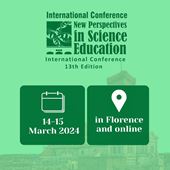Transfer and Outreach of Light-driven Reactions at Nanoscale Metals (CRC 1636)
Tobias Eckardt, PhD-student at the University of Potsdam University of Potsdam Institute of Chemistry Department of Chemistry Education (Group of Prof. Dr. Amitabh Banerji) Karl-Liebknecht-Str. 24/25 14476 Potsdam-Golm House 25, Room D1.19 (Germany)
Amitabh Banerji, University Potsdam (Germany)
Abstract
The Collaborative Research Center 1636 at the University of Potsdam is working on elementary processes of light-driven reactions at nanoscale metals. In the transfer and outreach project (Z04) we aim to develop teaching and learning materials for this current research. In this way, (high-school) students should be able to relate to research-relevant topics. To serve this purpose, it is essential to present complex content, as in our case on nanoscale metals, in a clear and tangible way. Another central aspect of our work is to encourage young researchers for science communication.
On the poster we are going to explain how we are approaching the task of curriculum innovation and science communication for the CRC 1636. A focus will lie on the development of hands-on experiments to CRC related topics. For instance, we could develop an experiment to produce glass marbles from waste glass dust with the help of a flambee. These glass marbles can be colored in the same step using metal nanoparticles (reduction of metal salt solutions) - red glass marbles (gold nanoparticles, see photo) and yellow-orange glass marbles (silver nanoparticles) can be produced within 5 minutes.
In another experiment, we are working on the coupling of spiropyran molecules to gold nanoparticles. Spiropyran as a molecular switch is already known as a teaching experiment [1]. For the switching process from spiropyran to merocyanine normally UV light (200-400 nm) is required. By utilizing the light sensitivity of gold nanoparticles, we want to shift the required wavelength into the region of visible light. Our aim is to develop a hands-on experiment for this coupling so that the light-controlled processes on nanoparticles can be clearly illustrated.
To conclude we are going to present shortly how learning materials, nanoparticle experiments as well as models, can be utilized not only for educational purpose but also for science communication.
Keywords: gold-nanoparticles, glass marbles, curriculum innovation, spiropyran, hands-on-experiment
REFERENCES
[1] Meuter, N., Tausch, M. W. (2020). Spiropyran – ein didaktisches Multitalent – Experimentelle Erschließung chemischer Basiskonzepte mit dem molekularen Schalter Spiropyran/Merocyanin, CHEMKON 27 (4), 169-178
 New Perspectives in Science Education
New Perspectives in Science Education





























